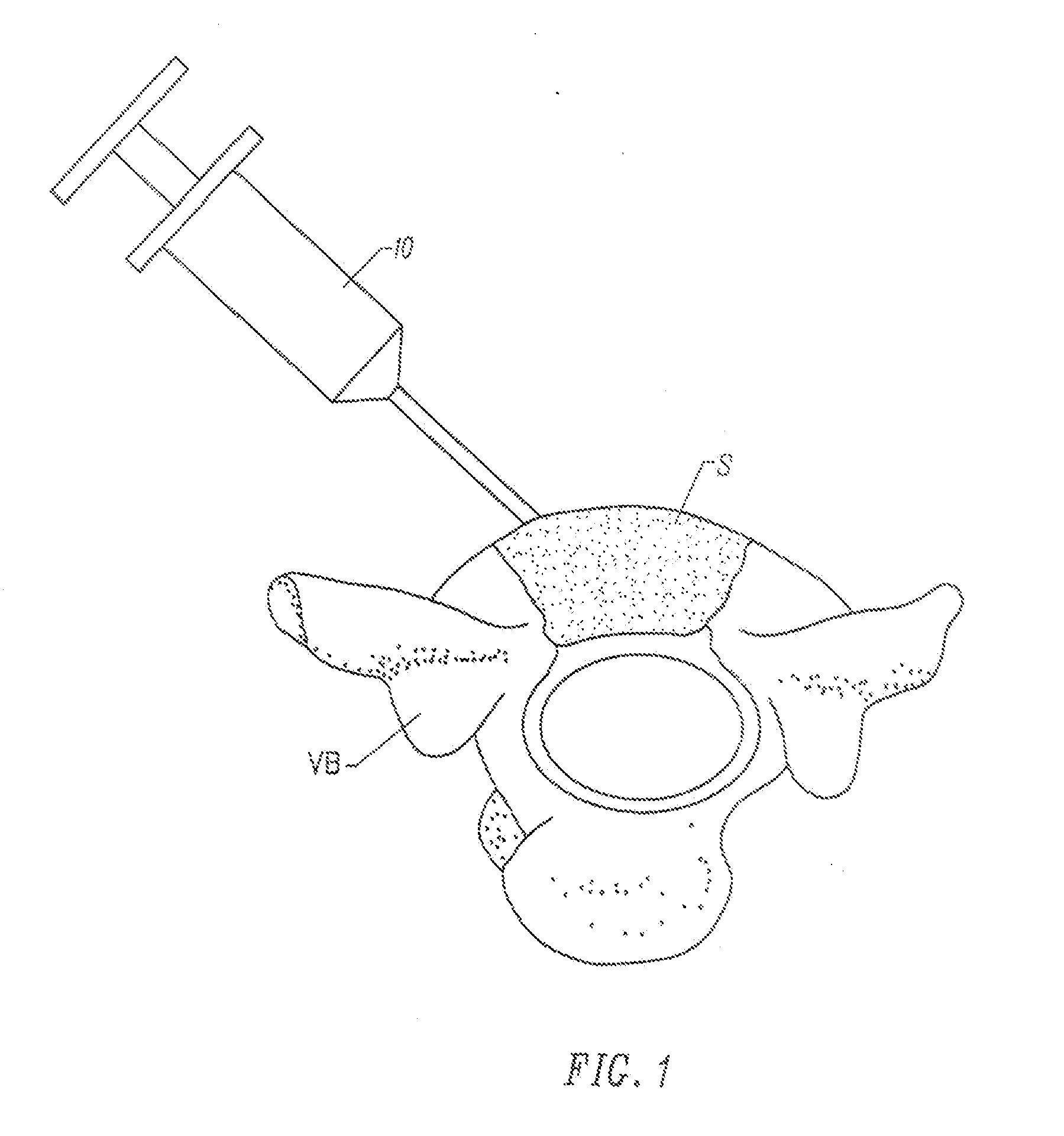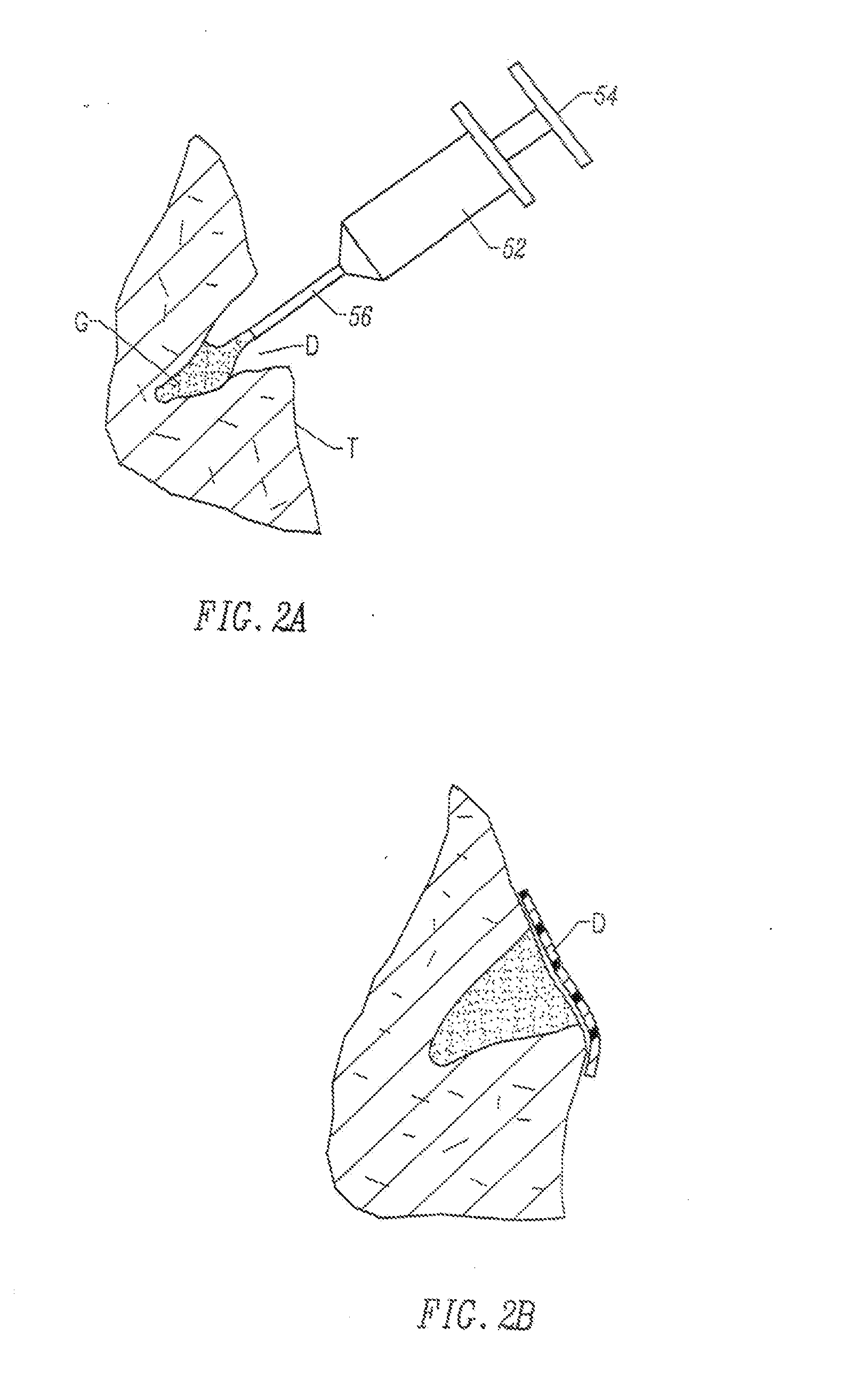Fragmented polymeric compositions and methods for their use
a polymer composition and fragment technology, applied in the field of biocompatible crosslinked polymeric compositions, can solve the problem that the composition remains generally immobile, and achieves the effect of inhibiting degradation and/or further excessive cross-linking of materials
- Summary
- Abstract
- Description
- Claims
- Application Information
AI Technical Summary
Benefits of technology
Problems solved by technology
Method used
Image
Examples
example 1
Materials and Methods for Production of a Fragmented Polymeric Product
[0086]Fragmented polymeric compositions are generally prepared as follows:
[0087]Using pyrogen-free glassware and distilled water throughout, food grade gelatin (300 Bloom, Atlantic Gelatin, General Foods Corp., Woburn, Mass.) at 10% solids was allowed to swell in 0.1 N aq. sodium hydroxide and 0.05 sodium periodate and held at 0° C. to 8° C. for 2-3 days. The swollen granules were washed in distilled water until the pH reached 8. The neutralized swollen granules were dried in a laminar flow hood and re-suspended in 0.05 M sodium phosphate, 0.15 M sodium chloride, pH 7.2+ / −0.2, at 10% solids. The composition was then loaded into 3.0 cc syringes and irradiated at 3.0 megarad with electron beam to sterilize.
example 2
Materials and Methods for Production of a Fragmented Polymeric Product
[0088]Gelatin (300 Bloom, Atlantic Gelatin, General Foods Corp., Woburn, Mass.) was allowed to swell in an aqueous buffer (e.g. 0.05 M sodium phosphate, 0.15 M sodium chloride, pH 7.2+ / −0.2) at 1-10% solids and was cross-linked by either glutaraldehyde (0.01-0.05%, w / w, overnight, room temperature), by sodium periodate (0.05 M, 0° C. to 8° C., 48 hours) or by 0.3-3.0 megarads of gamma or electron beam irradiation. The hydrogels were then extruded from a syringe using normal manual pressure.
example 3
Materials and Methods for Production of a Fragmented Polymeric Product
[0089]Gelatin (300 Bloom, Atlantic Gelatin, General Foods Corp., Woburn, Mass.) was allowed to swell in distilled water at 1-10% solids (w / w) chilled to 5° C. The resultant hydrogel was fragmented by stirring with an impeller driven by a motor. Then, sodium periodate and sodium hydroxide were added and mixed to achieve 0.05 M sodium periodate and 0.10 M sodium hydroxide. The chilled mixture was held at 0° C. to 8° C. for 2-3 days. The cross-linked hydrogel fragments were then washed with 5° C. water to achieve pH 8. Finally the hydrogel fragments were washed with an aqueous buffer (e.g. 0.05 sodium phosphate and 0.15 sodium chloride, pH 7.2+ / −0.2) and left at 0° C. to 8° C. to equilibrate with the buffer. Free buffer was decanted from the fragmented hydrogel mass and the hydrogel particles were loaded into syringes and irradiated at 3.0 megarads by electron beam or gamma irradiation to sterilize. Such sterilized f...
PUM
| Property | Measurement | Unit |
|---|---|---|
| weight | aaaaa | aaaaa |
| equilibrium water content | aaaaa | aaaaa |
| particle size | aaaaa | aaaaa |
Abstract
Description
Claims
Application Information
 Login to View More
Login to View More - R&D
- Intellectual Property
- Life Sciences
- Materials
- Tech Scout
- Unparalleled Data Quality
- Higher Quality Content
- 60% Fewer Hallucinations
Browse by: Latest US Patents, China's latest patents, Technical Efficacy Thesaurus, Application Domain, Technology Topic, Popular Technical Reports.
© 2025 PatSnap. All rights reserved.Legal|Privacy policy|Modern Slavery Act Transparency Statement|Sitemap|About US| Contact US: help@patsnap.com



